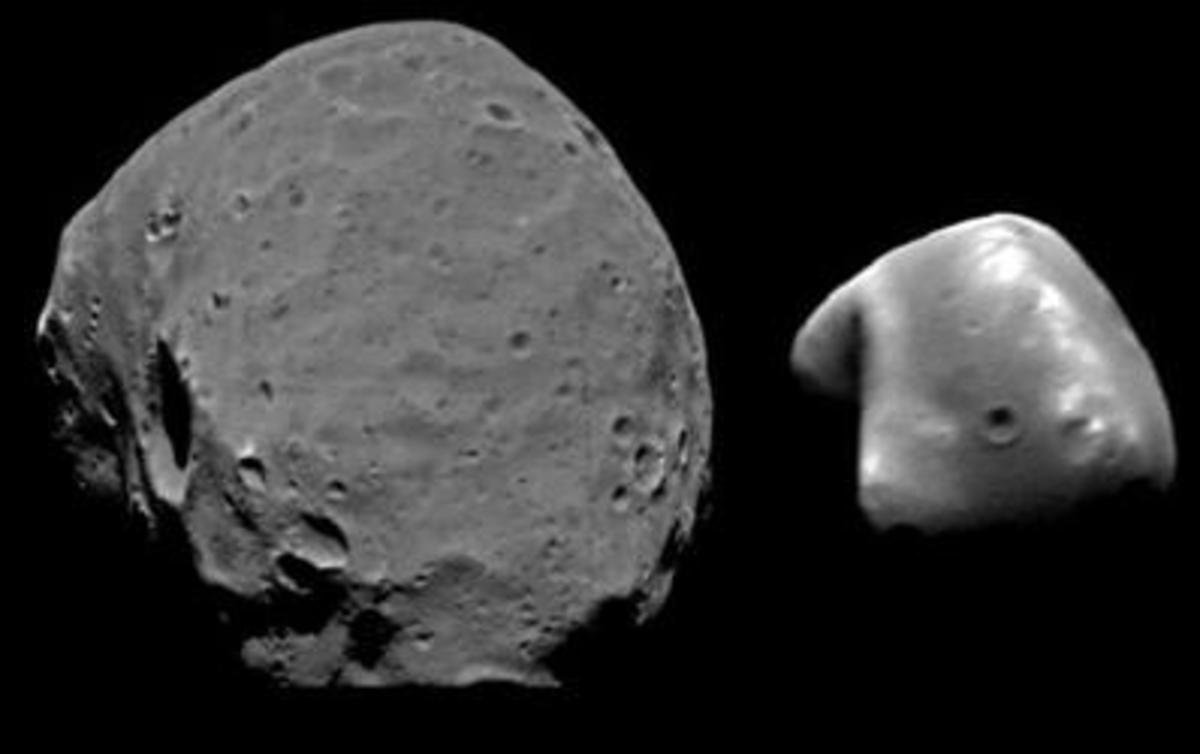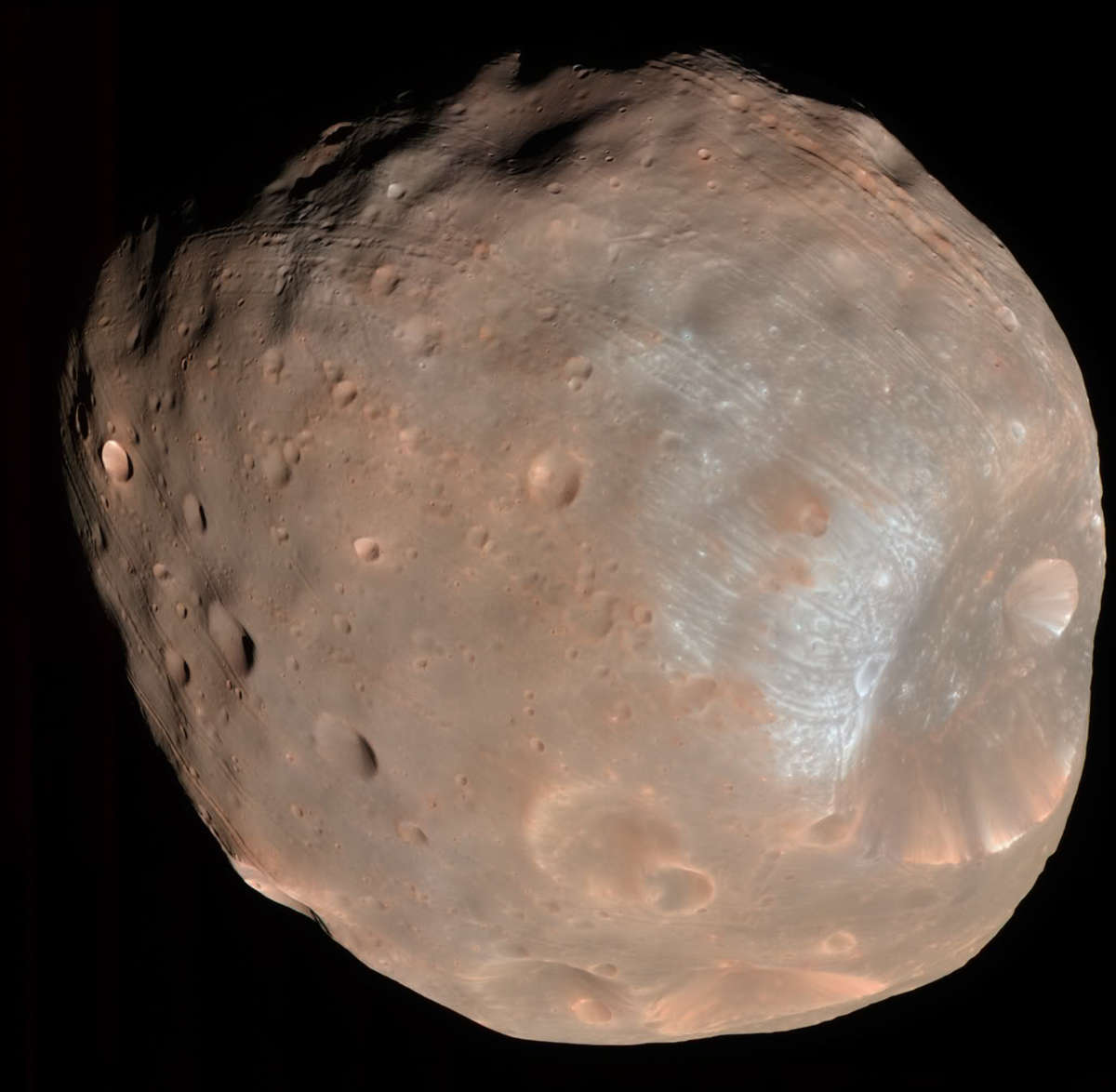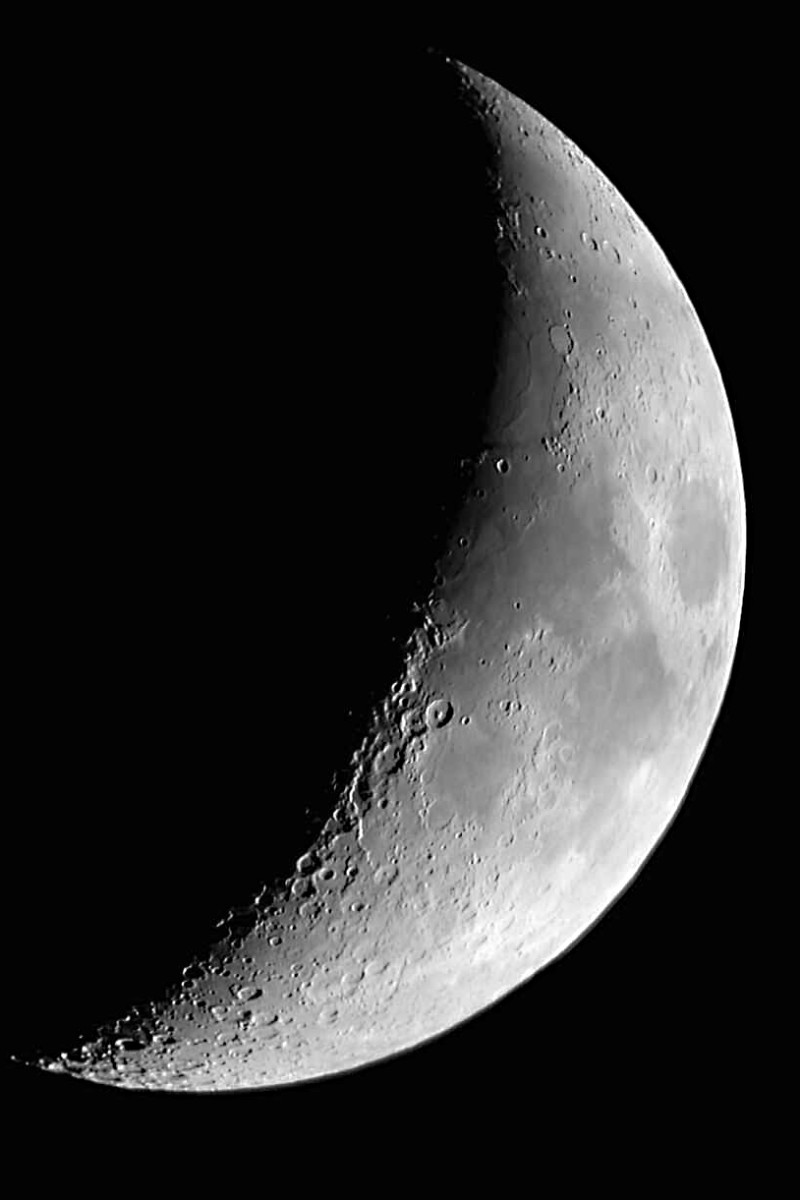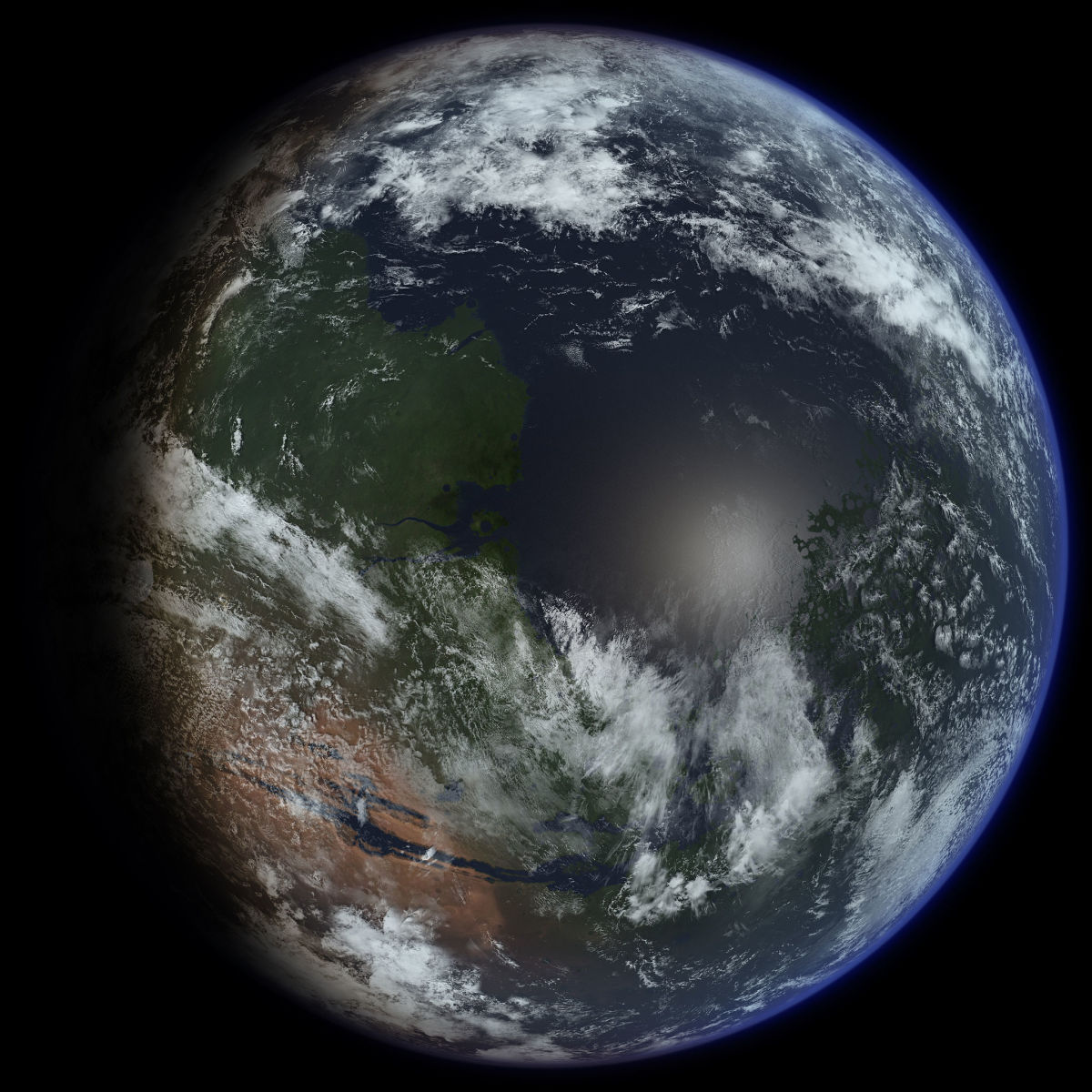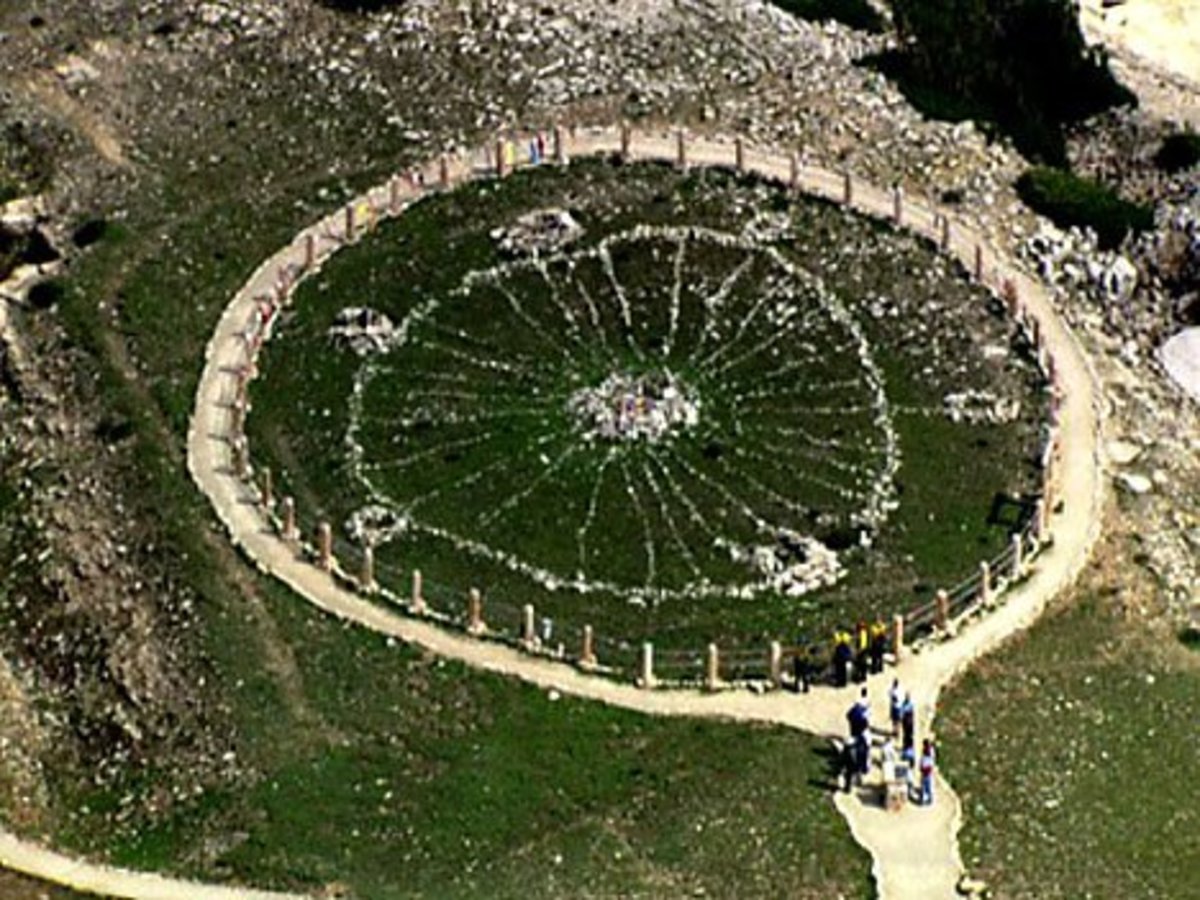Phobos and the Stickney Crater
The Stickney Crater on Phobos, a Moon of Mars

Phobos
Phobos is the larger and closer of the two Martian moons. "Phobos" means "fear" in Greek. Phobos is small--only about 12 miles across (19 kilometers); and it's also very close to Mars, it's parent planet. How close? About 9377 kilometers (5,827 miles) from the center of Mars--which is closer than New York is to Japan, and about the same distance New York is to Tel Aviv, Israel. If we were Martians, it would be just as easy to go to the moon as it is to visit Tel Aviv here on Earth!
Phobos was discovered by astronomer Asaph Hall, Sr., at the U.S. Naval Observatory in Washington, DC on August 18, 1877.
Why Phobos? Why "fear"?
This is one of the most fascinating things I've come across in my various researches on space. The following is an excerpt from a letter to the journal Astronautics, dated February 1960, written by Fred Singer, who was then the science advisor to the US President, Dwight Eisenhower:
"My conclusion...that is the satellite is indeed spiraling inward as deduced from astronomical observation, then there is little alternative to the hypothesis that it is hollow and therefore Martian made..."
For many years, speculation was rife in the scientific community that this moon was an artificial object, and not man-made. Therefore, it had to be Martian-made . The astronomers of the time were correct in thinking that this moon was very light; and that it's orbit was spiralling inward. We still don't know for sure why this moon's density is so low, but the most recent pictures from the Mars Reconnaissance Orbiter, in March of 2008, gives us some ideas that perhaps Phobos is hollow, or perhaps has water trapped beneath the surface.
The astronomers of the 1960's, especially Russian astrophysicist Iosif Shklovsky, when studying the orbital pattern of Phobos, concluded that it was a hollow iron sphere about 16 kilometers (10 miles) across but less than 6 cm thick (2 inches thick), and also concluded that it was a Martian artifact .
We now have pictures of it. It isn't a Martian artifact, at all. It isn't a hollow iron sphere. Instead, it more closely resembles a pockmarked lump of rock.
The mars Reconnaissance Orbiter has given us photos of this object in space. Phobos is heavily cratered--it is pitted and scarred with craters. The largest crater is the Stickney crater, named after Chloe Angeline Stickney Hall, wife of the astronomer who discovered the moon. In 1878, Hall wrote:
"I might have abandoned the search for Martian satellites had it not been for the encouragement of my wife."
This crater has a crater within it. The Stickney crater is so large it takes up about half the moon's surface, and it is about 9 kilometers (5.6 miles) across. Grooves and chains seem to radiate from the Stickney crater. These have led to theories that the impact of the meteorite which formed this crater nearly destroyed the Phobos moon, itself. Some evidence from the Mars Express Orbiter indicates that those grooves extending outside the crater in streaks down its side, are unrelated to the initial impact and are formed by material ejected from other impacts on Mars. The crater has lined walls, caused by landslides of material falling into the crater.
Phobos

Phobos's close orbit around Mars makes for some unusual effects. For one thing, Mars has two moons, and they aren't in synchronous orbit. So, as one moon is rising, the other moon is setting. Another thing--Phobos orbits Mars BELOW the synchronous orbit radius of Mars itself; meaning it goes around Mars faster than Mars rotates. Phobos rises and sets on Mars twice a day!
What this also means is that Phobos goes through its moon phases very rapidly. If you were standing on Mars, you would be treated to the sight of the new moon, quarter moon, half moon and full moon of Phobos three times per day! (Phobos's phases, as seen on Mars, take 0.3191 days), and a mere 13 seconds longer than the sidereal period of Phobos. If you were standing on Mars, you would see Phobos rise in the west, zip rapidly across the sky, and set in the east, about four hours later. And as it is zipping across the sky, you would see its phases change, from new to quarter to half to full. Because its orbit is so close to Mars, you couldn't see it at all above the horizon unless your latitude was greater than 70.4 degrees. So, for an Earth instance--Finland is about 70 degrees northern latitude. You would have to be further north on Mars than Finland is on Earth, in order to see this moon Phobos, at all.
And yes, the orbit of Phobos IS spiralling inwards. Because the Phobos orbit is shorter than a Martian day, "tidal locking" decreases the orbital radius by 20 meters in a century (about 65 feet). That means in 11 million years, Phobos will be sucked into Mar's gravity and BOOM! No more Phobos. It may, rather than impact Mars, break up into a planetary ring, prior to impact.
"Tidal locking" is a phrase used to describe the gravitational gradient which makes one astral body always face another--for example, the moon always presents one side towards the earth. The other side of the moon is dark.
So Phobos's short orbital period in combination with the gradient of gravity that produces tidal locking causes this spiral inwards of the moon's path.

